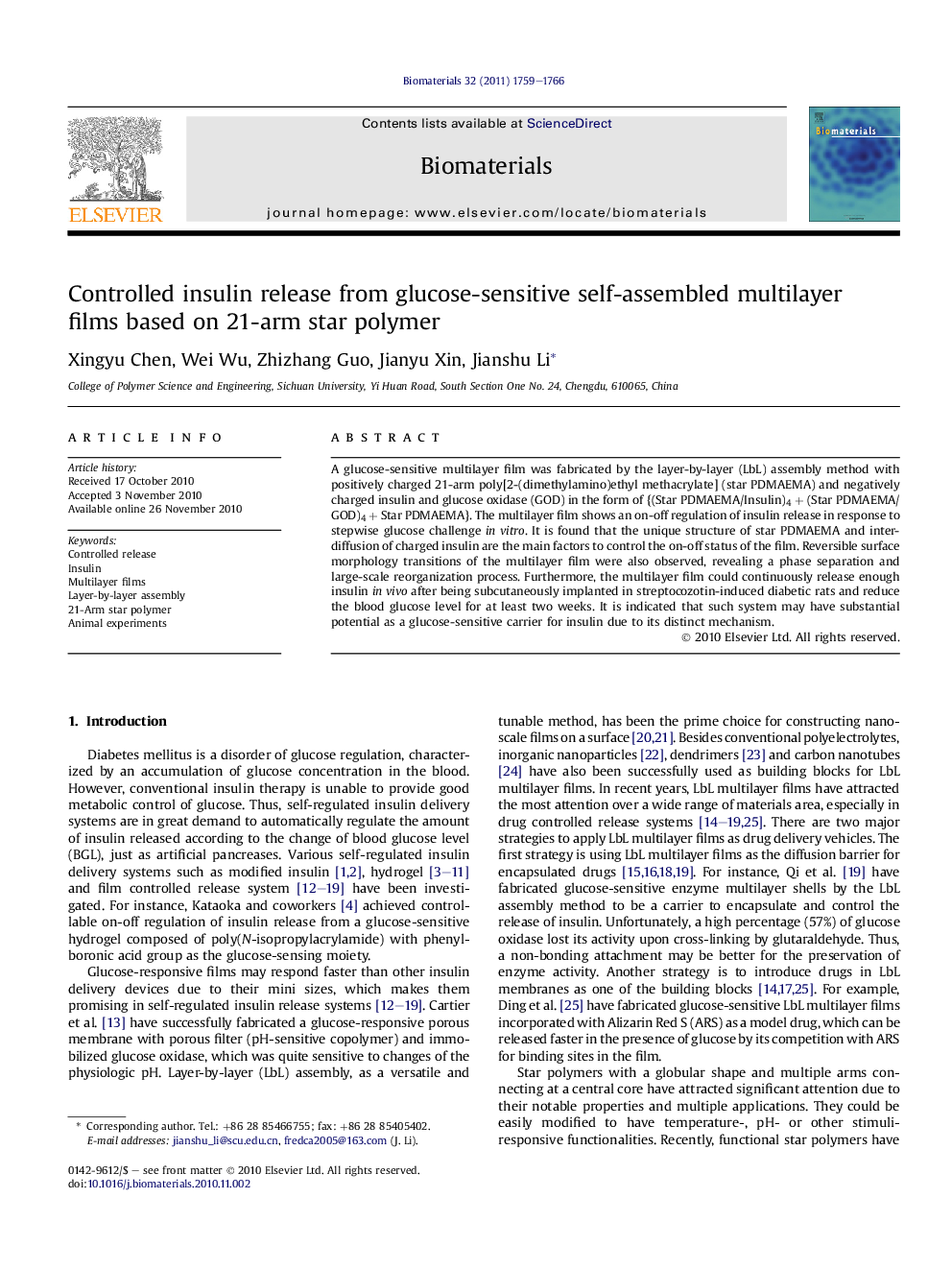| Article ID | Journal | Published Year | Pages | File Type |
|---|---|---|---|---|
| 8615 | Biomaterials | 2011 | 8 Pages |
A glucose-sensitive multilayer film was fabricated by the layer-by-layer (LbL) assembly method with positively charged 21-arm poly[2-(dimethylamino)ethyl methacrylate] (star PDMAEMA) and negatively charged insulin and glucose oxidase (GOD) in the form of {(Star PDMAEMA/Insulin)4 + (Star PDMAEMA/GOD)4 + Star PDMAEMA}. The multilayer film shows an on-off regulation of insulin release in response to stepwise glucose challenge in vitro. It is found that the unique structure of star PDMAEMA and interdiffusion of charged insulin are the main factors to control the on-off status of the film. Reversible surface morphology transitions of the multilayer film were also observed, revealing a phase separation and large-scale reorganization process. Furthermore, the multilayer film could continuously release enough insulin in vivo after being subcutaneously implanted in streptocozotin-induced diabetic rats and reduce the blood glucose level for at least two weeks. It is indicated that such system may have substantial potential as a glucose-sensitive carrier for insulin due to its distinct mechanism.
